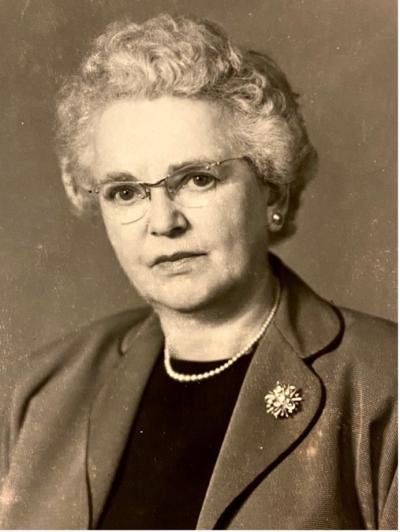An Earth Science Retrospective: Grace Anne Stewart

Ohio State’s School of Earth Sciences, including its predecessor departments, has been and continues to be the academic home of many outstanding academic leaders, people who have not only pushed the boundaries of our science, but who have also endeavored to make headway in, and to improve for the sake of all, the academic ecosystem. One shining example of such a leader is Dr. Grace Anne Stewart (1893-1970), who served on the faculty at Ohio State from 1923 to 1954.
Grace Anne Stewart was born on a farm in Minnedosa, Manitoba, in August 1893, the same year and month that Orton Hall, which was to become her academic home, was opened to the public. Following high school, Stewart entered the University of Alberta (in Edmonton), becoming, in 1918, the first woman to graduate in Canada with a BA in Geology. In 1920, she received the MA degree in Geology from the University of Alberta. In 1922, she received a PhD from the University of Chicago, studying paleontology under Stuart Weller. This year, 2022, marks 100 years from the time of Stewart’s PhD degree.
During the summers of 1919 and 1920 Stewart worked at the Research Council of Alberta, and in the summers of 1921 and 1922 she worked at the Geological Survey of Canada, at the National Museum in Ottawa.
In 1923, John Adams Bownocker, Chair of the Department of Geology, invited Grace Anne Stewart to join Ohio State as an Instructor. By 1946 she was promoted to Professor, and she remained at Ohio State until her retirement in 1946.
As a scientist, Grace Anne Stewart’s work laid important foundational blocks for our current understanding of the Silurian and Devonian paleontology and stratigraphy of North America. Her work concentrated on Ohio and southern Ontario. Perhaps her most notable contribution was the initial description of the rocks and fossils of the Silica Shale (Devonian), from northwestern Ohio. Today, spectacular Phacops (or Eldredgeops) trilobites from the Silica Shale are present in untold numbers of public and private collections around the world. The form she described, P. rana milleri, was later used by Niles Eldredge as a keystone in his evolutionary hypothesis of punctuated equilibria (co-authored by Stephen Jay Gould). Records in the Orton Museum show that she devoted considerable time to curation of Ohio State’s geological collection, in addition to her research and teaching.
Prof. Stewart was active in professional societies. She was elected as a Fellow of the Geological Society of America, the Paleontological Society, and the Ohio Academy of Science.
Grace Anne Stewart was an advocate and ally for women on the Ohio State faculty, and in the geological profession more generally. At OSU, she was active in the Faculty Women’s Group. By all accounts, she was a welcoming, inclusive voice at a time long before it was fashionable. In 2015, graduate students at Stewart’s alma mater, the University of Alberta, established the Grace Anne Stewart Speaker Series to celebrate diversity in the Earth & Atmospheric Sciences Department.
–Loren E. Babcock
